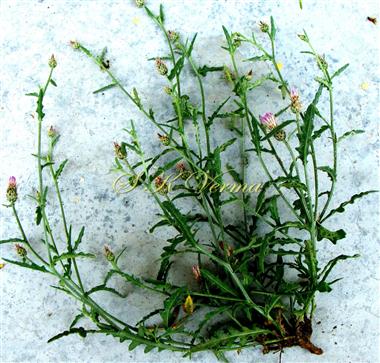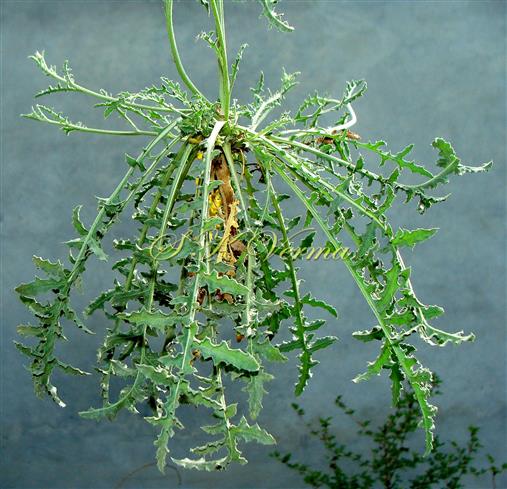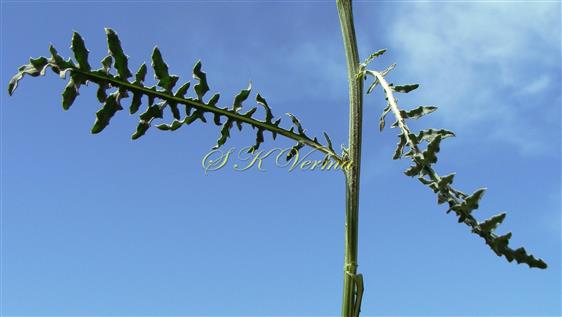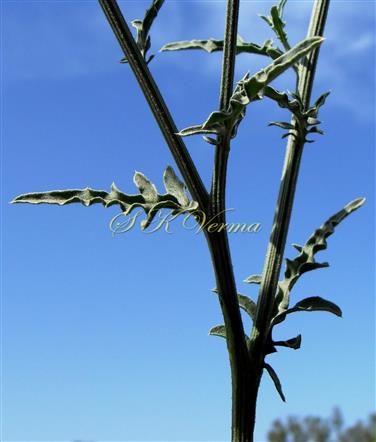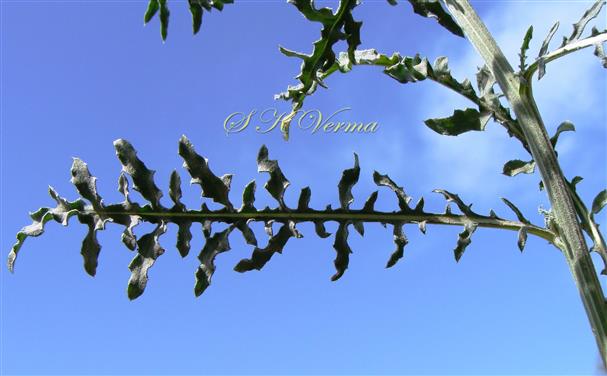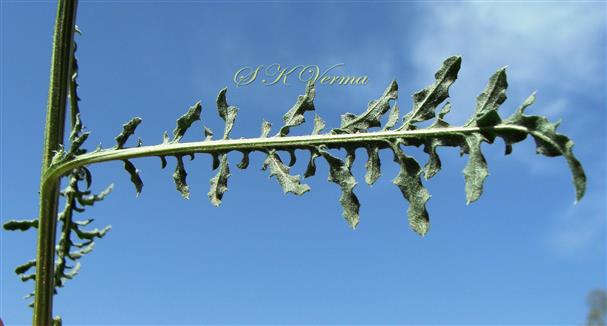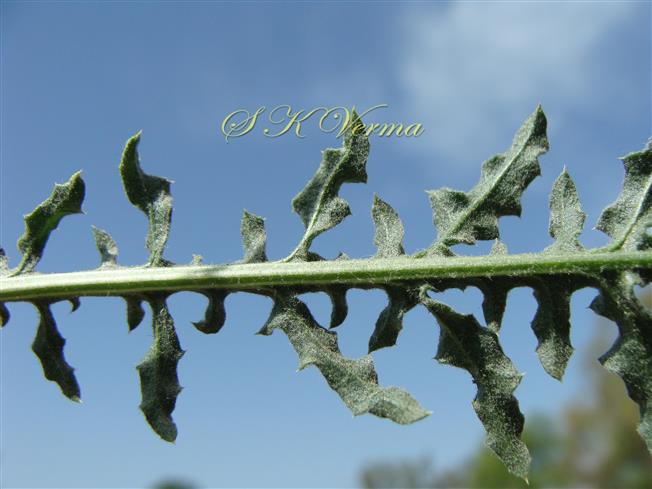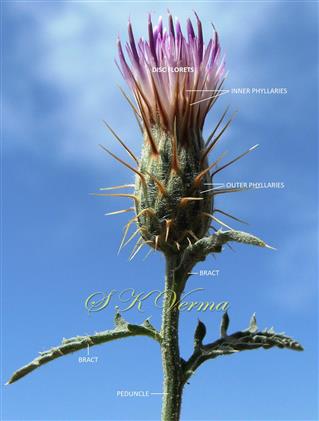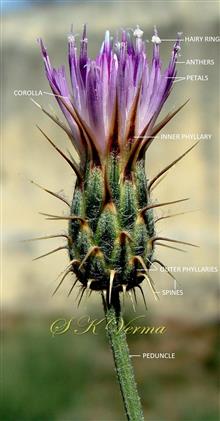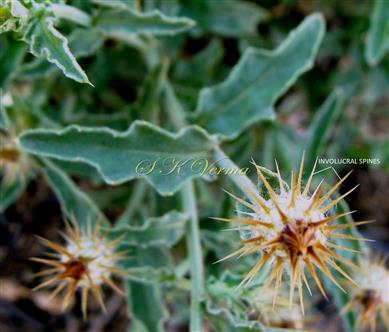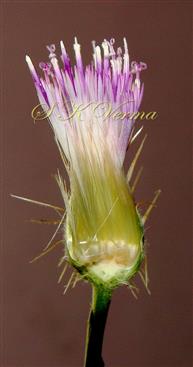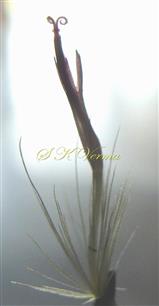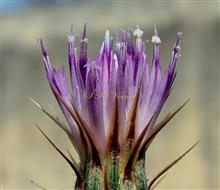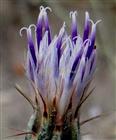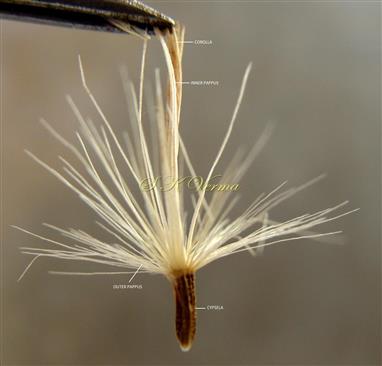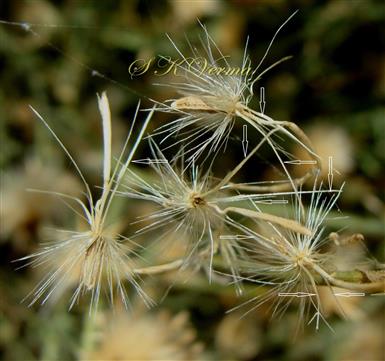OLIGOCHAETA
Oligochaeta
K. Koch, Linnaea. 17: 42. 1843; Shi & Martins, Fl. China @ eFloras.org 20-21: 179; Serratula sect. Oligochaeta Candolle, Prodr. 6: 671. 1838.
Annual herb. Stem usually branched from base. Leaves undivided or lyrately pinnatipartite. Capitula disciform, homogamous, sessile, axillary or terminal at end of stem and branches, solitary or in clusters of 2 or 3. Phyllaries imbricate, attenuate into a short spindle or acuminate. Florets bisexual. Corolla pink. Stigmatic branches patent. Cypselae with an entire or minutely denticulate apical rim. Pappus elements of 2 types: outer pappus of scabrid bristles; inner pappus of 1-5 bristles, slightly longer and distinctly wider than outer ones.
3 species
Oligochaeta divaricata
Oligochaeta divaricata
(DC.) K. Koch, Linnaea 17:43.1843; Amberboa ramosa (Roxb.) Jeffrey, Scientist 3: 29. 1958; Rao in Hajra et al. Fl. Ind. 12: 153. 1995.Oligochaeta ramose Wagenitz in Verroffent., Geobot. Inst. 37: 323. 1962; Fl. Eastern Ghats: India p. 283; Sharma & Bir, Fl. Patiala 106. 1978; Serratula divaricata, Fisch. & C. A. Mey., Index Seminum 1:37. 1835; Volutarella divaricata Benth. & Hook. f., Gen. Pl. 2(1): 476. 1873; Hook. f., Fl. Brit. Ind. 3: 383. 1882.
Annual straggling herb. Decumbent or suberect, 18-40 cm tall, woody at base. Stem angular, striate, scaberulous, branched from base, branching dichotomous, spreading, branches 2.5-5 cm long. Leaves alternate, sessile, basal and cauline; basal and lower cauline leaves larger, elliptic oblong, oblanceolate or obovatein outline, pinnately lobed, lobes with a short apical spine; upper cauline leaves wavy or crisped or toothed or entire, smaller up to 2.5 cm x 0.6 cm, base cuneate or attenuate, surfaces pubescent, lower surface more dense, tomentose. Capitula discoid, 1-2 cm across and +/- 2.5 cm long, ovoid, solitary terminal on 0.2-1.6 cm long peduncle, peduncle sulcate, scabrid, with 1-2 small, foliaceous bracts. Involucre ovoid, 1.5-2 cm diameter. Phyllaries multiseriate (5-6-seriate), imbricate, subequal, spinescent, spines up to 1 cm long; outer phyllaries ovate, ca. 5 mm long, reflexed, woolly on outside; inner phyllaries linear-lanceolate, 0.8-1.4 cm long, margins scarious, ciliate, midvein terminated into erect or spreading spine, pale yellow. Receptacle flat, paleate; paleae equal or shorter than cypselae. Florets (all disc florets) up to 1.5 cm long, erect, bisexual, pale purple. Corolla purplish or white, +/- campanulate, 5-lobed, lobes ca. 2 mm long, linear-lanceolate, acute; tube, throat and limb nearly equal. Anthers exserted. Style ca. 1.2 cm long, slender, with a hairy-ring at base of stigmatic branches, linear-subulate, recurved. Cypselae blackish-brown, obovoid-oblong, 4-5-angled, truncate, ca. 5 mm long, rib bed, punctate between angles, apex truncate. Pappus silvery brown, ca. 1.3 cm long. Pappus elements of 2 types: outer pappus of scabrid bristles, ca. 12 mm long; inner pappus of 1-5 bristles, slightly longer and wider than outer ones
Common Names: Branched Sweet Sultan; Unt Kantilo, Badaward (Hindi)
